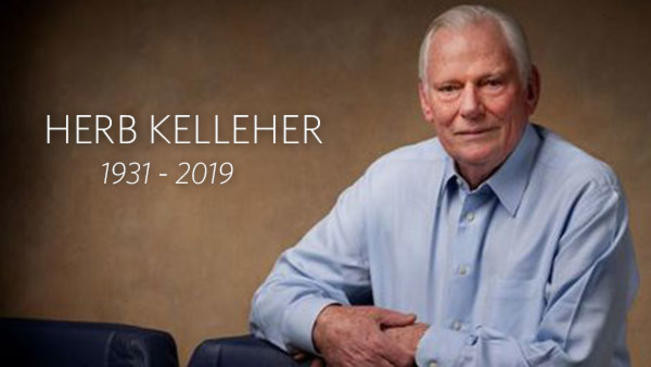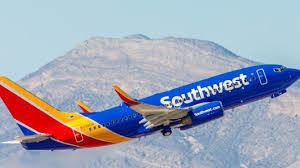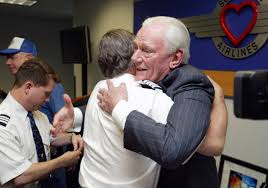In January 2019, the world lost a great innovator. Herb Kelleher was a pioneer who totally reshaped the aviation industry. His vision revolutionized commercial aviation, democratized the skies and got me interested to study his leadership profile and share it with readers. He was an influence on my own leadership style, and he has much wisdom to impart. The following article looks at Kelleher’s leadership and how that affected his employees and overall business at Southwest Airlines.

Kelleher’s Leadership The definition of leadership is open to any number of interpretations. According to Northouse (2018), leadership can be “a process whereby an individual influences a group of individuals to achieve a common goal.” Kelleher embodied Northouse’s statement and combined it with other approaches to create his own effective brand of leadership. Influence as a concept is essential to successful leadership. Northouse (2018) writes: “leaders direct their synergies toward influencing individuals to achieve something together” (p. 7). Kelleher influenced his employees by having a clear vision and taking concreate steps to achieve it. Cote’s (2015) analysis of Kelleher outlined the following: In the simplest explanation of Herb Kelleher, he has developed a process of influencing and inspiring people to change. In this process, ethics is central to leadership and he has helped to establish and reinforce organizational values. In order to facilitate people to change, the following steps are essential in organizations like Southwest Airlines, which are: (1) leader creates a vision that is long-term, challenging, desirable, and compelling, (2) leader communicates the vision according to future change, (3) leader influences and inspires employees to be part of a culture based on morals, ethics, and core values, and (4) leader engages employees to increase productivity through empowerment. Cote’s analysis was strong in its assessment of the importance of Kelleher’s vision in developing Southwest’s business model. Employees played a major role in this vision, so Cote is right in giving that aspect of Kelleher’s leadership that much value. However, where this analysis is lacking is in the description of Kelleher’s personal traits, outside of leadership style. To deliver leadership like Kelleher did, a person must possess high levels of intelligence and perseverance, of which he had both. Creating a Vision for Southwest A vision, in leadership, is a mental model of an ideal future state and has five characteristics: a picture, a change, values, map, and a challenge (Northouse, 2018, p. 142). At Southwest, Kelleher influenced followers by creating a vision and communicating it to gain support. His message was clear: “we’re going to give you more for less, not less for less. We’re going to give you new airplanes, not old airplanes. We’re going to give you the best on-time performance. We’re going to give you the people who are most hospitable” (Lucier, 2004). A high-level vision gives employees the opportunity to be innovative and creative in achieving optimal results. Kelleher’s vision had all five of Northouse’s characteristics, and that, in part, is why it was effective.

Leadership Style A leader’s behavior is indicative of their leadership style, and Northouse (2018) defines leadership style as the behaviors of the leaders, focusing on what leaders do and how they act (p. 82). Behavior and style, therefore, influence one another greatly. Gaille (2013) identifies the core values of Kelleher’s leadership style: “one simple concept… ‘Be Yourself.’” Furthermore, Gaille (2013) identified four core values in Kelleher’s leadership style: 1) Do Good for Others; 2) Have Fun, Make a Difference; 3) Focus on the Customer; 4) Hire the Right People. Kelleher's leadership style was quite opposite to some traditional leaders. He did not rule over his employees, but rather ruled with his employees. He also believed that leadership is not the job of only upper management, but of every employee within the organization, and that every employee should have the ability to ascertain situations and be able to act on their own decisions. Kelleher believed in the abilities of his employees to make leadership decisions, as long as they are experienced with the pertinent situation. This tactic of employee empowerment has been successful for Southwest. Southwest is based on the upside-down pyramid structure. At the top are the front-line employees who make things happen, and at the bottom is the senior management to support them (Shetty, 2011). Despite Southwest’s impressive financial success, Kelleher made the decision to never increase his salary. He is quoted in an article by Elkins (2017): “I always turned down pay increases, bonus increases, to set a good example for all of our people, it's what I thought was a requirement of good leadership." On average in the United States, CEOs make 350 times more annually than the average employee (Ferdman, 2014). Kelleher went to the extent of taking a voluntary pay cut to avoid layoffs during the Gulf fuel crisis, a time when prices rose so much that airlines were losing money every time a plane took off (McGee-Copper & Looper, 2016). This decision was based on more than Kelleher’s respect and care for his employees. McGee-Cooper and Looper (2016) outline the long-term effects of layoffs (illustration of concept in Appendix A): Layoffs appear to work in the short term by significantly lowering overhead costs. But over time, employee morale and trust suffer, corporate memory and learnings get lost, productivity drops, and client and vendor relationships are damaged. Sales and profits fall, leading to even more layoffs. Following Kelleher’s decision to avoid layoffs, Southwest employees pledged $1.3 million in payroll deductions to help recoup lost revenue (McGee-Copper & Looper, 2016). Kelleher was also widely known for his philosophy of servant leadership, and he practised it with zeal. He would often wear Mickey Mouse ears during flights and assist flight attendants serving passengers, interacting directly with front-line employees and passengers, embodying humble, servant leadership (Walter, 2017). According to Greenleaf’s (2016) definition of a servant leader, “the servant-leader is servant first… It begins with the natural feeling that one wants to serve, to serve first. Then conscious choice brings one to aspire to lead”. According to McGee-Cooper and Looper (2016), Kelleher’s motto for both Southwest employees and the airline as a whole wass: “Manage in good times to prepare for bad times.” To that end, the airline cross-trains employees to increase their skills in many aspects of the company so they have an in-depth understanding of many business areas, allowing them to take responsibility for keeping the airline competitive, enhancing relationships and finding innovative solutions. By doing so, Kelleher created an environment in which employees feel confident in implementing new programs, making decisions, and helping customers in need. One of Kelleher’s guiding principles was that if an employee has used his or her best judgement to do what is right, leaders will stand behind them (McGee-Copper & Looper, 2016). Kelleher encouraged his employees to take risks, and if they failed, he encouraged to persevere, correct the mistake, and move on (Stanford Graduate School of Business, 2009). These qualities are usually identified in failure-tolerant leaders. “Failure tolerant leaders identify excusable mistakes and approach them as outcomes to be examined, understood, and built upon” (Farson, 2014). Traditional leaders tend to react in an opposite direction. Kelleher’s leadership style has parallels to path-goal theory. Two specific pieces of the theory that he used are supportive and participative. He practised both of these behaviours by developing a personal relationship with as many employees as possible. He also strongly valued information received from the employees in his decision-making process, as employees who are actually dealing with the issues will have better insight than the most upper management (Kirubakran, 2012). Clark (2014) defines the two leader behaviours employed by Kelleher as follows. The supportive leader “makes work pleasant for the workers by showing concern for them and by being friendly and approachable.” The participative leader “The leader consults with his followers before making a decision on how to proceed.” Creating a Constructive Climate Southwest has a history of innovation in the airline industry. For example, it introduced the low-cost carrier model into North American aviation. In order to succeed when taking risks, the leader of an organization – in this case, Kelleher – needs to establish a constructive climate. Northouse (2018) defines an organization’s climate as “people’s shared perceptions of the way things are in an organization” (p. 159). Kelleher openly believed that between employees, customers, and shareholders; employees came first. He respected, honored, protected, and rewarded all employees, regardless of title and position. In turn, those employees, now empowered by the praise and respect, treated Southwest’s customers with that same care. The service provided to customers built brand loyalty and made sure they would continue flying Southwest, which in turn increased value for shareholders. A company-wide focus on customer service was one of the main differentiators for the airline from its competition. Kelleher said in HSMAmericas’ (2018) video that tangible things (e.g., aircraft) can be purchased by nearly any airline in the same capacity, but the intangible qualities (e.g., impeccable customer service) were difficult to replicate. This type of leadership enabled the creation of the service-profit chain (SPC) model, which asserts “employee satisfaction soars when you enhance internal service quality (equipping employees with the skills and power to serve customers). Employee satisfaction in turn fuels employee loyalty, which raises employee productivity. Higher productivity means greater external service value for customers-which enhances customer satisfaction and loyalty” (Heskett et al., 2000). Additionally, Kelleher emphasized enhancing communication processes within the organization, but not in the traditional top-down corporate style. As Kelleher said in HSMAmericas’ (2018) video, he made the effort to personally connect with employees, valuing them as individuals, not just as workers, celebrate with them, grieve with them, and involve himself in their personal and professional lives.

Competencies, Attributes, and Skills Kelleher possessed a specific set of competencies that made him a successful leader, which are, according to Cote (2015): (1) established an environment in which diversity, dignity and respect are valued, (2) developed a value-added leadership development program based on the philosophy “hire for attitude and train for skill”, (3) stayed in touch with employees through effective communication and sense of humor, (4) inspired through commitment, putting employees FIRST , (5) created a shared vision by influencing employees and translating that vision into action, and (6) developed innovative strategies keeping SWA a successful airline in a competitive marketplace. According to Kelleher, there are six key personal attributes necessary for successful leadership: intelligence, health, optimism, perseverance, attention, and love for people. There are also seven skills that he believes are the most important contributors to success: good listening skills, broad knowledge and education, sound judgment, the ability to be a passionate advocate, the ability to separate important from unimportant things, the ability to be goal oriented with focus on priorities, and pleasant skepticism (Cote). Herb leading Southwest with Innovation Kelleher was an innovative leader and had introduced revolutionary ideas such as the 15-minute turnaround, one class of service instead of two or three classes of service, no pre-reserved seats, serving secondary airports instead of major hubs, no meals, and a single-model fleet to keep maintenance and training costs low. By doing so, he introduced a totally new business model to the airline industry, known commonly today as the low-cost carrier model (Stanford Graduate School of Business, 2009) Spahr (2015) defines innovative leaders as leaders who “manage the process of innovation. In some cases, this leader is responsible for generating new ideas within an organization. In others, he or she is responsible for fostering and recognizing new ideas put forth by followers.” Conclusion Kelleher took Southwest Airlines to great heights until he stepped down from the CEO position in 2001. By using visionary and innovative leadership, he proved that one can totally revolutionize the industry and can innovate a new business model which is hard to imitate by its competitors. Kelleher clearly followed one of Porter’s (2004) generic strategies of competitive advantage, differentiation. “In a differentiation strategy, a firm seeks to be unique in its industry along some dimensions that are widely valued by buyers. It selects one or more attributes that many buyers in an industry perceive as important, and uniquely positions itself to meet those needs” (Porter, 2004). Kelleher battled for Southwest Airlines through legal challenges, budget crises, fare wars, and high fuel prices. He was always ahead of the industry and successfully steered the airline towards profitability for 44 consecutive years (Company Overview). He achieved all this success by having a clear vision for the airline, influencing his employees, and preparing them to change the normal norms of the industry. He also empowered his employees to make leadership decisions and learn and move on from their mistakes. He worked side by side with his employees, during flights serving passengers, or on the ground checking them in. This helped him to always be connected with the needs of both employees and passengers, and allowed him the insight to plan strategies that best aligned with what was actually needed. By keeping employees at the forefront, Kelleher was able to increase employee satisfaction, which eventually led to repeat customer business of 100 million passengers per year and made Southwest the largest domestic carrier in United States. Many other operators tried to copy the successful business model created by Kelleher, but failed, as they looked only at limited tangible aspects, whereas they should have focused at the full mosaic of his leadership style and strategy. References Biography.com Editors. (2014, April 02). Herb Kelleher. Retrieved October 16, 2017, from https://www.biography.com/people/herb-kelleher-278970 Company Overview. (n.d.). Retrieved October 10, 2017, from http://www.southwestairlinesinvestorrelations.com/our-company/company-overview Clark, D. (2013, October 31). Path-Goal Leadership Theory. Retrieved October 10, 2017, from http://www.nwlink.com/~donclark/leader/lead_path_goal.html Cote, B. (2015, October 13). Leadership Analysis: Southwest Airlines Flying High with Herb Kelleher, Former CEO. Retrieved October 10, 2017, from https://www.linkedin.com/pulse/leadership-analysis-southwest-airlines-flying-high-bob-cote-phd-mba/ Elkins, K. (2017, August 14). Why the Texas lawyer who started Southwest Airlines in 1967 never gave himself a raise or a bonus. Retrieved October 10, 2017, from https://www.cnbc.com/2017/08/14/herb-kelleher-never-took-a-pay-raise-or-bonus-at-southwest.html Farson, R., and Keyes, R. (2014). The Failure-Tolerant Leader. Retrieved October 01, 2017, from https://hbr.org/2002/08/the-failure-tolerant-leader Ferdman, R. A. (2014, September 25). The pay gap between CEOs and workers is much worse than you realize. Retrieved October 10, 2017, from https://www.washingtonpost.com/news/wonk/wp/2014/09/25/the-pay-gap-between-ceos-and-workers-is-much-worse-than-you-realize/?utm_term=.98e7dbee707b Gaille, B. (2013, October 14). Southwest Airline's Herb Kelleher's Leadership Style. Retrieved October 10, 2017, from https://brandongaille.com/southwest-airlines-herb-kellehers-leadership-style/ Graham-Leviss, K., & Authors, V. (2017, May 03). The 5 Skills That Innovative Leaders Have in Common. Retrieved October 15, 2017, from https://hbr.org/2016/12/the-5-skills-that-innovative-leaders-have-in-common Greenleaf, R. K. (2016). What is Servant Leadership? Retrieved October 10, 2017, from https://www.greenleaf.org/what-is-servant-leadership/ Heskett, J. L., Jones, T. O., Loveman, G. W., Sasser, W. E., Jr., & Schlesinger, L. A. (2000). Putting the service-profit chain to work. Boston, MA: Harvard College/HBR OnPoint. HSMAmericas. (2008, October 14). Business of Business is People: Herb Kelleher. Retrieved October 10, 2017, from https://www.youtube.com/watch?v=oxTFA1kh1m8 Kelleher, H. (2016, October 20). How Southwest Airlines built its culture | Herb Kelleher | WOBI. Retrieved October 10, 2017, from https://www.youtube.com/watch?v=8_CeFiUkV7s. Kirubakaran. (2012, October 26). Southwest Airlines Case Study - Case Study. Retrieved October 10, 2017, from https://www.allbestessays.com/English/Southwest-Airlines-Case-Study/34987.html Lucier, C. (2004, June 01). Herb Kelleher: The Thought Leader Interview. Retrieved October 10, 2017, from https://www.strategy-business.com/article/04212?gko=8cb4f Mcgee-Cooper, A., & Looper, G. (2016, January 15). Southwest Airlines: Does the "Soft Stuff" Work with Tough Problems? Retrieved October 10, 2017, from https://thesystemsthinker.com/southwest-airlines-does-the-soft-stuff-work-with-tough-problems/ Northouse, P. G. (2018). Introduction to Leadership: Concepts and Practice (3rd ed.). Thousand Oaks, CA: SAGE Publications. Porter, M. E. (2004). Competitive advantage: creating and sustaining superior performance. New York: Free Press. Shetty, N. (2011, May 4). Leadership Style at Southwest Airlines. Retrieved October 10, 2017, from http://www.managementparadise.com/forums/foundation-human-skills-f-h-s/221126-leadership-style-southwest-airlines.html Spahr, P. (2014, November 25). What is Innovative Leadership? How Imagination Revolutionizes Business. Retrieved October 15, 2017, from https://online.stu.edu/innovative-leadership/ Stanford Graduate School of Business (2009, July 27). Herb Kelleher: Managing in Good Times and Bad. Retrieved October 14, 2017, from https://www.youtube.com/watch?v=wxyC3Ywb9yc Vinnedge, M. (2015, September 22). From the Corner Office: Herb Kelleher. Retrieved October 17, 2017, from https://www.success.com/article/from-the-corner-office-herb-kelleher Walter, E. (2017, June 8). In One Plane Ride, the Co-Founder of Southwest Airlines Teaches Us a Powerful Leadership Lesson. Retrieved October 10, 2017, from https://www.inc.com/ekaterina-walter/a-simple-but-powerful-leadership-lesson-from-the-co-founder-of-southwest-airline.html
